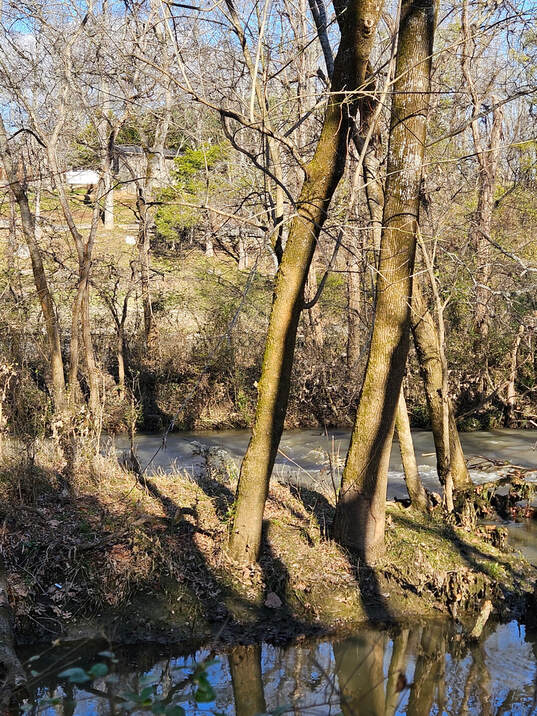
On the north side of Stones River Country Club, Riverview Drive curves its way along a ridge along the east side of the Stones River. Stately homes sit on the edge of the tall bluff sloping sharply down to the river bank. The green lawns and terraces hide the events that occurred here on January 2, 1863.
On New Year’s Day, 1863, Union General William Rosecrans formulated his plans for the next phase of the battle. His troops had stabilized the right flank along the Nashville Pike. He now turned his attention back to his original plan for his left flank. In the relatively quiet of January 1st, he had the brigades of Colonels Grider and Price move across the river at McFadden’s Ford and take position on the high ridge on the other side.
This nameless ridge was the second highest point on the battlefield and about ten feet shorter than the nearby Wayne’s Hill. Since the Confederates had moved their cannons to earthworks on the side of the hill, the ridge provided some protection against direct enemy fire and provided some cover. The next morning, Confederate General Braxton Bragg began to review the battlefield to make his own plans. At that point, Bragg observed the Union forces positioned on the adjoining ridge.
Bragg realized the ramifications of the Union position. The Union could bring their own cannons across the river and place them on the ridge. This would bring cannon fire within range of the Confederate positions. The high elevation provided a full view of the Confederate right flank which could have dire consequences. The rain-swollen river was slowing the Union artillery advance so action needed to be done on that day. Bragg gave his orders to General John Breckenridge to retake the ridge from the Union forces.
Breckenridge had also done his own recon that morning. His information was that the Union had placed a large number of cannons on the bluff overlooking the west bank of McFadden’s Ford. He stressed to Bragg that attacking the ridge was a suicide mission since it brought them within firing range of the big guns. Bragg and Breckenridge were not bosom buddies and the attack plans brought further hate on Breckenridge’s part.
Bragg did take Breckenridge’s concerns into account and discussed with him actions that would lessen the impact of the Union guns. Bragg knew from experience that artillery had difficulty aiming at a distance as the sun was setting. Since sunset was about 4:30PM, an attack at 4:00PM would have sufficient shadows and lower angles of light meaning the Union cannons would have difficulty in hitting the ridge accurately. The late start would also limit the chances of a successful counter-attack by the Union before darkness. Breckenridge reluctantly agreed to the plan.
A cannon fire at 4:00PM signaled the Confederate attack from the troops amassed east of Wayne’s Hill. Within a short time frame, the larger Confederate forces quickly overwhelmed the two Union brigades on the ridge. The Union forces quickly retreated back to McFadden’s Ford.
The Confederate forces had achieved Bragg’s objective of capturing the ridge where Riverview Drive now stands. The problem for the Confederates was that the victory was too easy. After a brief celebration, the forces took chase after the vanquished Union forces. This enthusiasm led to bloody consequences as the 57 cannons that couldn’t aim at the ridge could certainly hit the river crossing directly below them. Confederate General Roger Hanson took a shot to the leg which proved to be fatal. He watched the battle leaned up against a tree. To learn the rest of the story about McFadden's Ford, visit the battlefield’s visitor center.
For the best view of the ridge, walk the Greenway south from the Thompson Lane trailhead, especially in the winter months. Image the bloody battle across the river on the high ridge where the houses now stand.
- by Thomas Zei
